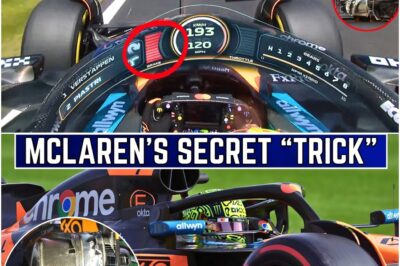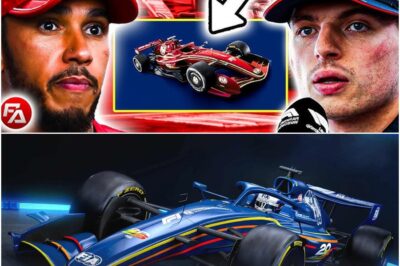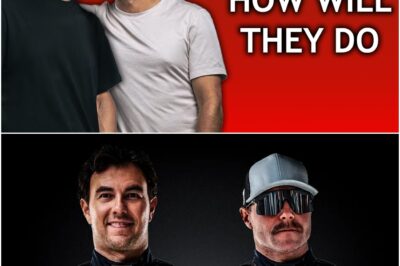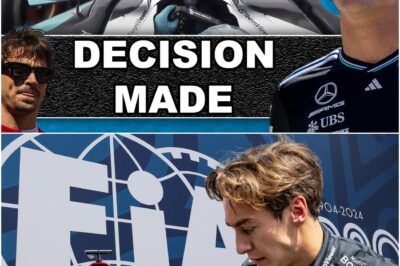In a move that sent shockwaves through the Formula 1 paddock, American automotive titan Cadillac has officially announced its blockbuster driver lineup for its 2026 entry, securing the services of seasoned veterans Sergio “Checo” Perez and Valtteri Bottas. This powerhouse pairing, boasting a combined experience of over 500 Grand Prix starts and 16 victories, signals a clear and aggressive intent from the General Motors-backed team: they aren’t just here to participate; they’re here to compete.

The announcement marks the culmination of a long and determined journey for an American brand to re-enter the pinnacle of motorsport. While initially linked with Michael Andretti’s ambitious efforts, Cadillac has forged its own path, establishing a formidable foundation to challenge the established order. By choosing two of the grid’s most respected and resilient drivers, Cadillac is prioritizing deep-seated experience and proven leadership over raw, untested youth—a strategic masterstroke for a team starting from scratch.
For Sergio Perez, this move represents a remarkable career renaissance. After a turbulent period at Red Bull Racing, where he was often overshadowed by the generational talent of Max Verstappen, many pundits had begun writing the next chapter of his career outside of top-tier competition. However, Cadillac’s leadership saw beyond the statistics. They recognized a driver whose strengths in racecraft, masterful tire management, and uncanny ability to seize opportunities in chaotic races are precisely the assets a new team needs.
It’s widely believed that Red Bull’s car development philosophy, which catered almost exclusively to Verstappen’s unique driving style, never allowed Perez to fully unlock his potential. He became a casualty of a system designed around a singular talent. At Cadillac, he will be the undisputed senior driver, a team leader whose feedback will be instrumental in shaping the car’s development from the ground up. This is not just a drive; it’s a chance for Checo to build a legacy, to prove that his race-winning capabilities were not a fluke but the product of a world-class operator who simply needed the right environment to thrive. His connection with the burgeoning Latin American and U.S. fanbase is also a massive commercial boon for an American team looking to capture hearts and minds in its home market.
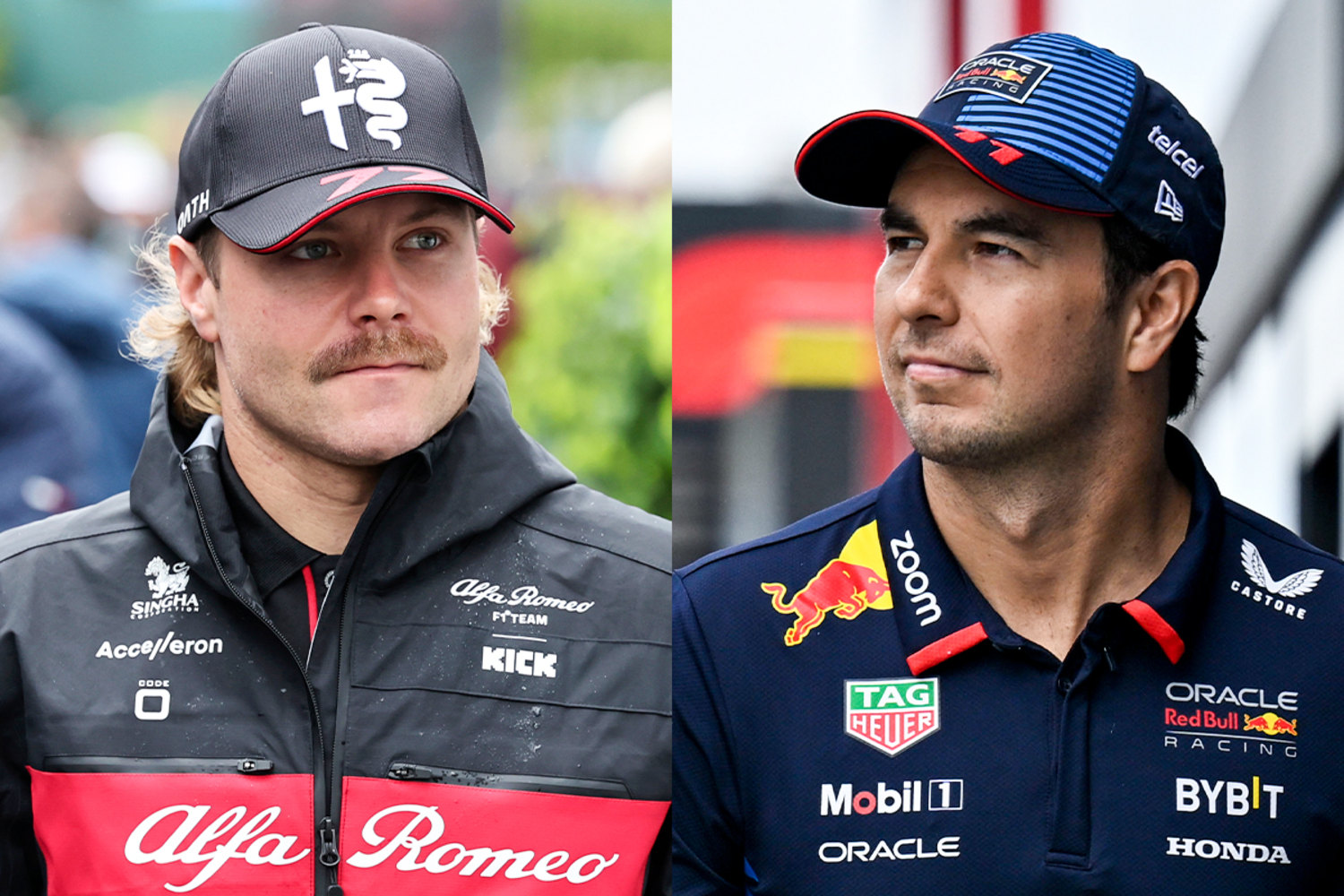
On the other side of the garage stands Valtteri Bottas, a driver with a uniquely comprehensive F1 education. Having experienced the dizzying highs of championship contention with Mercedes-AMG Petronas, Bottas knows what a winning machine feels like. He understands the relentless pursuit of perfection, the intricate details, and the seamless teamwork required to dominate. But perhaps more importantly, his subsequent years at Sauber (formerly Alfa Romeo) have given him an invaluable perspective on the grit required to fight in the midfield.
Bottas has weathered the storms of uncompetitive machinery and the challenges of building a team’s morale when points are scarce. He has transformed from a cog in a well-oiled machine to a leader who has to inspire and guide. This dual experience makes him the perfect foil for Perez and an essential mentor for the fledgling Cadillac outfit. He can provide insights into creating a championship-caliber structure while simultaneously keeping the team grounded and motivated during the inevitable early struggles. His calm demeanor and technical acumen will be a steadying force as Cadillac navigates the treacherous waters of its debut seasons.
Cadillac’s timing could not be more perfect. The team enters F1 at the dawn of a new regulatory era in 2026. This is not a minor aerodynamic tweak; it’s a fundamental reset. The new regulations will usher in lighter, narrower cars featuring revolutionary active aerodynamics and a more powerful hybrid engine with a greater emphasis on electrical power. This seismic shift effectively levels the playing field, neutralizing the entrenched advantages of incumbent teams and offering a clean slate for new entrants.
Wisely, Cadillac has opted to use Ferrari engines for its initial seasons. This strategic decision allows the team to sidestep the monumental challenge of developing a competitive power unit from scratch—a pitfall that has doomed many ambitious projects in the past. By securing a proven, reliable, and powerful engine from Maranello, Cadillac can pour all its resources into what truly matters for a new team: designing and perfecting the chassis, suspension, and aerodynamics at its state-of-the-art facilities.

Backed by the financial might of General Motors, Cadillac is insulated from the financial precarity that has plagued so many new F1 teams. This is not a shoestring operation; it’s a full-fledged factory effort with the resources to attract top engineering talent and build a world-class infrastructure. This commitment is a clear statement that Cadillac is in this for the long haul, ready to invest what it takes to climb the grid.
In its debut season, success won’t be measured in podiums, but in progress. The primary goals for 2026 will be reliability, operational excellence, and a steady presence in the midfield battle. Finishing races, avoiding costly failures, and capitalizing on every opportunity to score points will be the mission. For Perez and Bottas, this challenge is a chance to step out of the shadows of former teammates and into the spotlight as architects of a new F1 giant. They are not just driving the cars; they are laying the very foundation of the team’s culture and competitive DNA.
The long-term vision is clear: to methodically close the gap to the front-runners, develop efficiently under the sport’s cost cap, and ultimately build a team capable of fighting for race wins and championships. With two of the most intelligent and experienced drivers at the helm, a legendary American brand on the door, and the full power of General Motors behind them, the Cadillac F1 project is poised to become one of the most compelling stories in motorsport for years to come. The grid has been warned.
News
McLaren’s secret brake system could be the game-changer in Formula 1. But is this innovative technology the real reason they’re winning races? What if the answer lies in a hidden feature that no one saw coming? Discover the truth behind McLaren’s breakthrough performance this season!
McLaren’s Game-Changing Advantage: The Power of Knowledge in Formula 1’s Reset Formula 1 is a sport defined by constant change….
Is F1 In Trouble? The Controversial Statements About 2026 Cars Could Completely Alter The Future Of The Sport. With Concerns Over Safety, Innovation, And Cost, Are The Plans For The Upcoming Cars Doomed To Fail? The Racing World Is On Edge As The Clock Ticks Down.
The 2026 Formula 1 Revolution: Will the Future Break the Cars, Terrify the Drivers, and Make the Sport Unrecognizable? Formula…
Cadillac’s F1 debut is set to turn heads, but can the American brand challenge the established teams in its first season? With little preparation and fierce competition ahead, Cadillac might surprise fans. Will their bold move into the sport redefine expectations or end in disaster?
The Cadillac F1 Team: A Bold New Era or a Recipe for Disaster? The latest buzz in the Formula 1…
A major contract drama has been exposed by none other than George Russell, shedding light on what’s been happening behind the scenes at Mercedes. What’s the real story, and why are certain details being kept secret? Is there more to come, or has the truth finally been revealed?
George Russell’s Future at Mercedes: A Contract Battle and the Upcoming F1 Drama The summer break has come to an…
EXCLUSIVE: What the Latest Dutch Verdict Means for Leclerc & Russell After F1 Car Inspections! The latest Dutch verdict could change everything for Leclerc and Russell after their F1 cars were thoroughly inspected. Will this decision lead to penalties, or is there an even bigger shake-up on the horizon for both drivers? Find out now what this new ruling means for the duo.
Oscar Piastri’s Remarkable Progress in 2025: Analyzing His Development and FIA’s New Verdict Before Dutch GP The 2025 Formula 1…
EXCLUSIVE: The Dutch Grand Prix could completely reshape Formula 1 after some unexpected details just got leaked! These new revelations could change the entire course of the season and challenge what we thought we knew about the sport. Will this race be the turning point F1 desperately needs?
The 2025 Dutch Grand Prix: A Weekend of Strategic Chaos and High Stakes Drama As the 2025 Dutch Grand Prix…
End of content
No more pages to load

